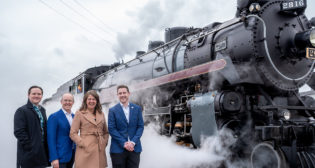
Transit Briefs: TransLink, Amtrak, Brightline, LACMTA, NJT, WMATA
Written by Marybeth Luczak, Executive Editor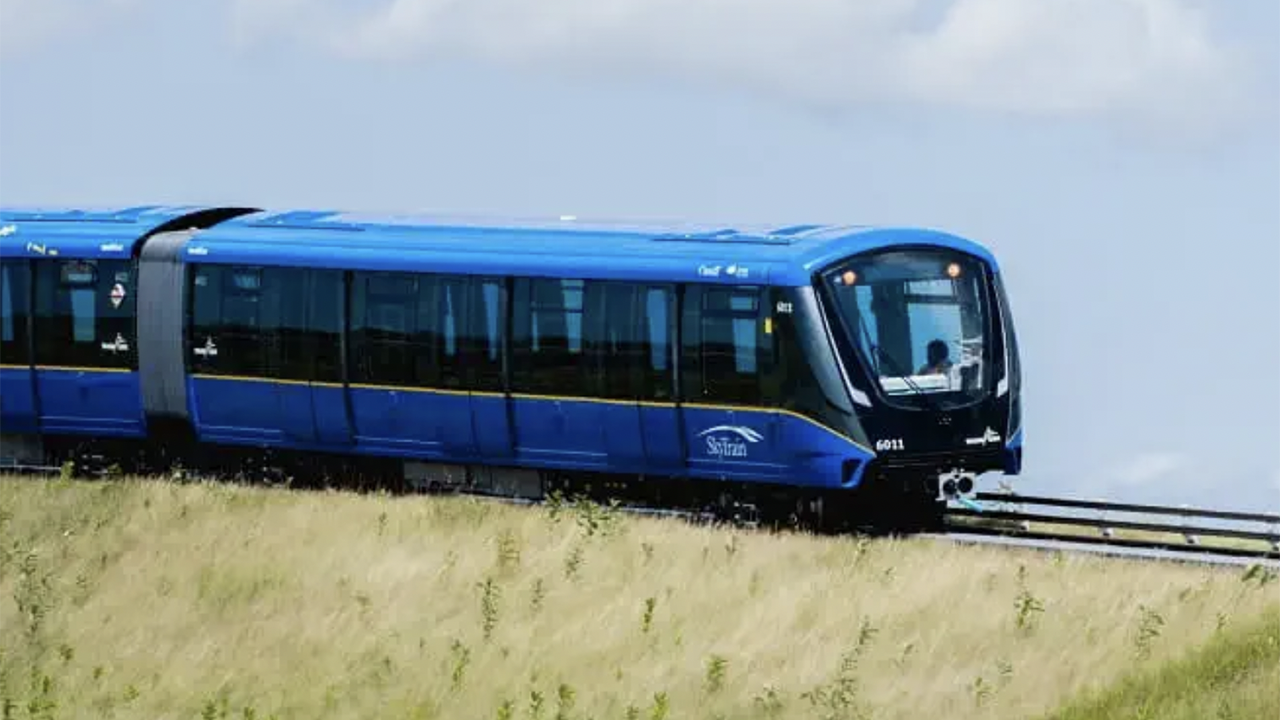
Alstom’s Mark V cars “will make SkyTrain better and more convenient for our customers, with added amenities for people using mobility devices, strollers, and bicycles,” reported Kevin Quinn, CEO of TransLink, which on Aug. 22 unveiled the new cars (above) that have entered the testing phase at a Kingston, Ontario, facility. (TransLink Photograph)
TransLink offers a preview of its new Alstom-built Mark V cars for the SkyTrain automated rapid transit system in metro Vancouver. Also, Amtrak has approved a stop in De Soto, Mo., for its Texas Eagle line; Brightline, Florida’s private-sector passenger railroad, selects Comply365’s mobile app for crews; Los Angeles County Metropolitan Transportation Authority (LACMTA) is renaming its West Santa Ana Branch Transit Corridor project; New Jersey Transit (NJT) ranks on Forbes’ America’s Best-in-State Employers 2023 list; and Washington Metropolitan Area Transit Authority (WMATA) reduces fare evasion by more than 70% with its new, higher faregates.
TransLink
British Columbia’s TransLink on Aug. 22 provided a first look at its new Mark V SkyTrain cars, which have entered the testing phase at an Alstom facility in Kingston, Ontario. The 205 new cars, to run as 41 five-car trainsets, were ordered in 2020 from Bombardier, which was acquired by Alstom in 2021. They will eventually replace the original Mark I models, which SkyTrain operator TransLink said are slated for retirement by the end of 2027. (To watch a video of the cars in test, click here.)
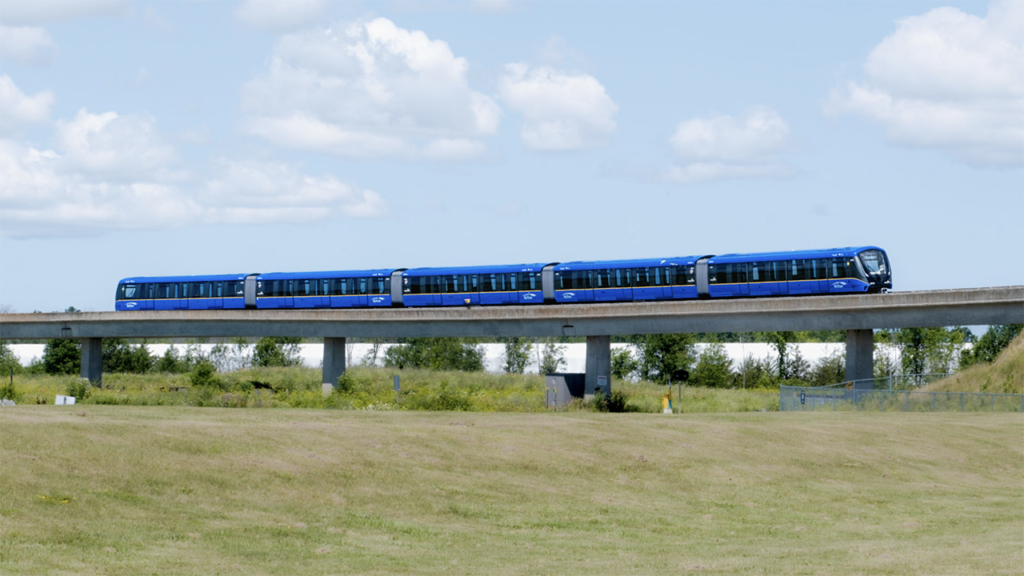
The Mark V cars feature an open-gangway design with mostly forward-facing seating, and they include more space for bikes, luggage and leaning pads, TransLink said. Their digital interior information displays will provide riders with improved onboard transit alerts. Strip indicator lights at the doors will assist people who have hearing loss by flashing when doors close, fault warnings are issued, or when emergency brakes are deployed, according to TransLink. The Mark V trains will operate with door chimes and on-train announcements to assist customers who are visually impaired.
The SkyTrain car purchase is part of the Expo Millennium Line Upgrade Program, which is funded by an investment of C$1.47 billion through the Investing in Canada Infrastructure Program and contributions from the government of Canada, government of British Columbia and TransLink. According to TransLink, the program also includes expanded vehicle storage facilities to accommodate the new fleet, and upgrades to operations and maintenance centers, mainline power, and control systems to support more frequent train service and longer trains. When the program is fully implemented, the Expo Line will be able to move 17,500 riders per hour per direction, and the Millennium Line will be able to move 7,500 riders per hour per direction. This represents a 32% and 96% increase respectively over the existing capacity, according to TransLink.
“This is an exciting and important step forward in launching the next generation of SkyTrain cars,” TransLink CEO Kevin Quinn said. “The Mark V will make SkyTrain better and more convenient for our customers, with added amenities for people using mobility devices, strollers and bicycles.”
Separately, TransLink in July 2022 awarded two contracts to Thales under the Expo and Millennium Upgrade Program.
Amtrak
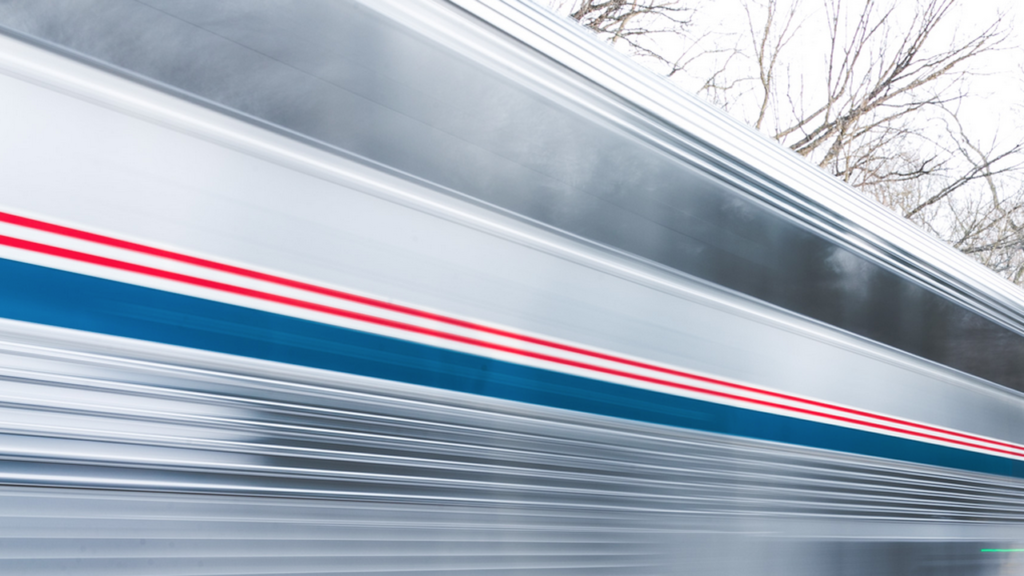
Amtrak has agreed to add a new passenger rail platform in De Soto, Mo., as part of the Texas Eagle route, Leader Publications of Jefferson County, Mo., reported Aug. 22.
After five years of work, “we’re thrilled that this has become a reality,” said De Soto Mayor Kathy Smith, according to the media outlet. “This new stop will give more than 100,000 people in our area a chance to board an Amtrak train in De Soto and go north to Chicago or south to Dallas and beyond.”
The De Soto City Council previously agreed to provide matching funds to build the platform, Leader Publications reported. The platform, to be constructed across the street from the public library, is estimated to cost $1.7 million.
De Soto City Manager Todd Melkus told the media outlet that the next step is to work with track owner Union Pacific (UP) on scheduling the trains, which run daily through De Soto.
“‘The southbound train comes through the city around 9:10 p.m., and the northbound train between 6:30-7 a.m.,’ Melkus said. He said those would be good boarding times,” according to Leader Publications, which noted the city must also secure funds from the state and Jefferson County “to help pay for construction of the platform to federal standards.”
According to Melkus, the city has agreed to use municipal property for gated parking for Amtrak riders.
“We’ve been without (passenger) service for more than 50 years, and now we’re back,” Melkus said to the media outlet. “We’re a railroad town, with Union Pacific’s shops located here. The timing is perfect. Our Main Street has been renovated and is growing rapidly. We have people in a three-county area ready to ride the train, and we’ll be ready for them.”
Brightline
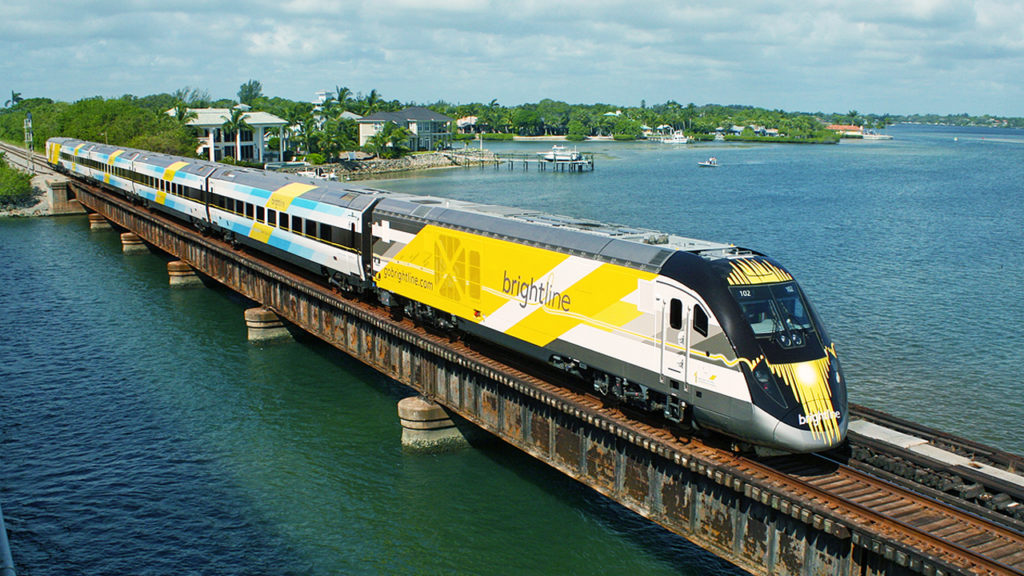
Brightline train conductors, engineers and other workers will use Comply365’s mobile app to access operating rules, bulletins, special instructions, and other important documents, Comply365 reported Aug. 22. Train crews will also use the enterprise SaaS and mobile solutions company’s electronic forms to capture data from the field to send back to station managers and other departments.
The company explained that crews will be able to quickly find the information they need by searching and filtering to relevant content, while adding personal annotations, bookmarks, and highlights to their documents, which will be retained across revisions. It added that Brightline will be able to ensure that crews have the most up-to-date content with automatic revision control, and will be able to break down compliance status in different views for insights to improve compliance.
“Digital transformation has improved rail safety by simplifying the authoring, distributing and compliance of all content associated with operating practices,” according to Comply365. “In addition to targeted content distribution, data captured in the field from electronic forms is contributing to greater efficiencies. Digital transformation has also introduced the automation of training programs to ensure new levels of safety.”
Comply365 is in use at several Class I railroads, including Norfolk Southern (NS), as well as at Watco, Iowa Northern Railway (IANR); Keolis Commuter Services, the operator of Massachusetts Bay Transportation Authority commuter rail; and Conrail.
LACMTA
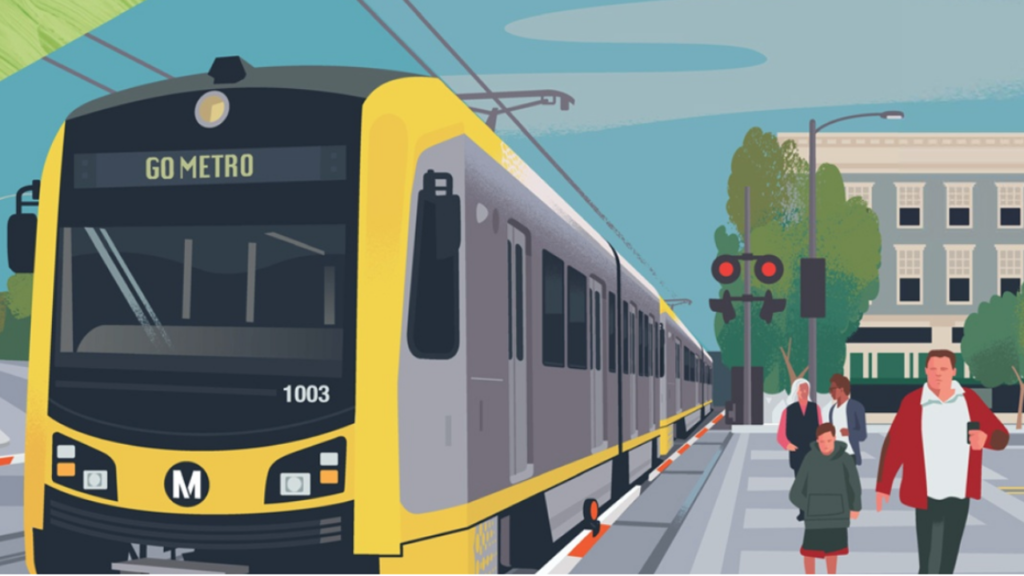
LACMTA is seeking the public’s help to rename the West Santa Ana Branch Transit Corridor project prior to the release of the Final EIS/EIR in summer 2024. The planned 14.5-mile, nine-station light rail line will link southeast Los Angeles County and downtown L.A. (see map below).
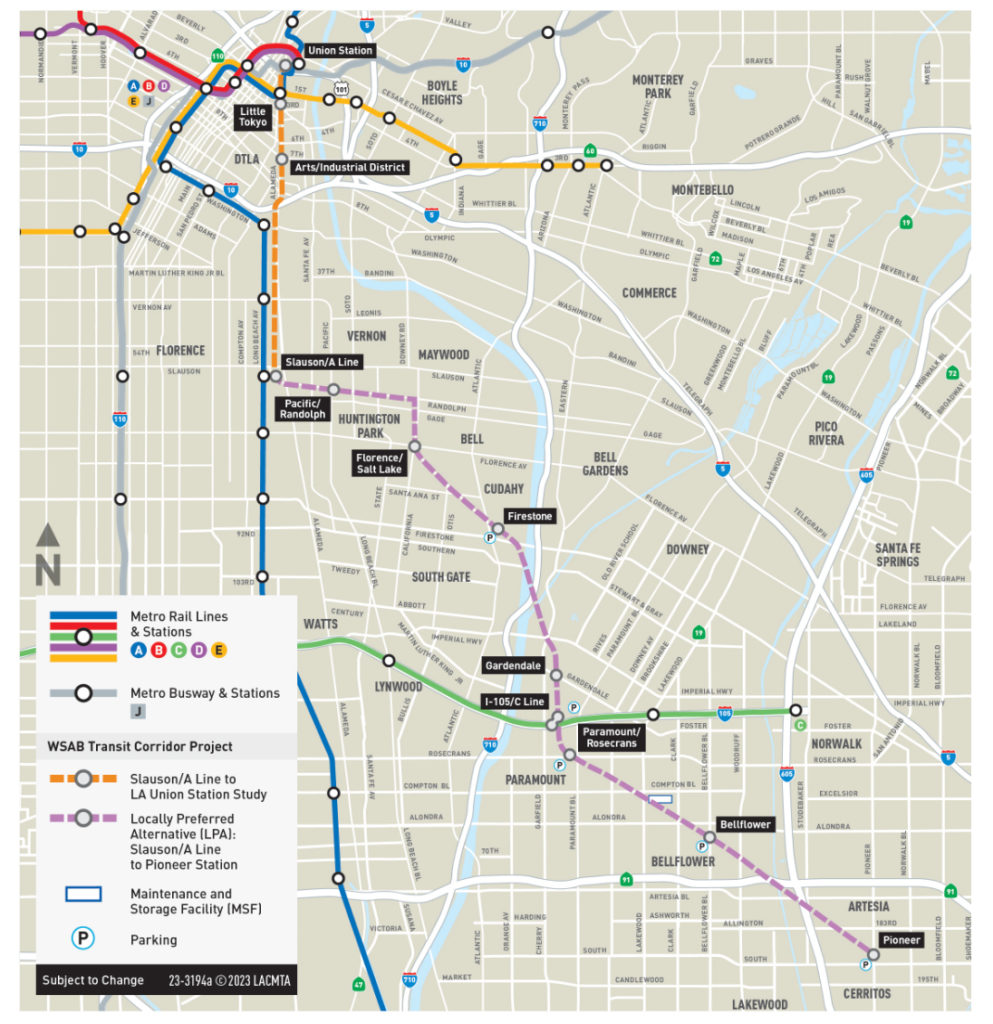
Why a new name? “While the existing project name carries historical significance––using the name of the rail corridor previously owned by Pacific Electric, which prior to the early 1960s, ran service from Downtown Los Angeles to the city of Santa Ana in Orange County––the new line won’t go as far as the city of Santa Ana. Rather, the line will terminate in Artesia. A new name will eliminate this confusion,” LACMTA explained.
The transit authority said it is looking to the public to provide names that reflect their communities and their histories and that “truly reflect the character, culture, experience of the people who live, work and play in the cities this new line will serve.”
Participants must be at least 13 years or older to submit a name at RenameWSAB.com or by calling the project helpline at (213) 922-6262. The deadline is Sept. 29, 2023. All participants will be entered for a chance to win a $100 gift card.
According to LACMTA, a panel of local judges will shortlist the top five names, which will then be showcased in a public voting campaign slated for November. The raffle winner will be announced in early October. The name with the most votes will be selected and announced in January 2024. Once approved, the new name will remain in place throughout the construction phase, and once construction is complete, the rail line will receive a newly designated line letter and line color as the project prepares for revenue service.
NJT
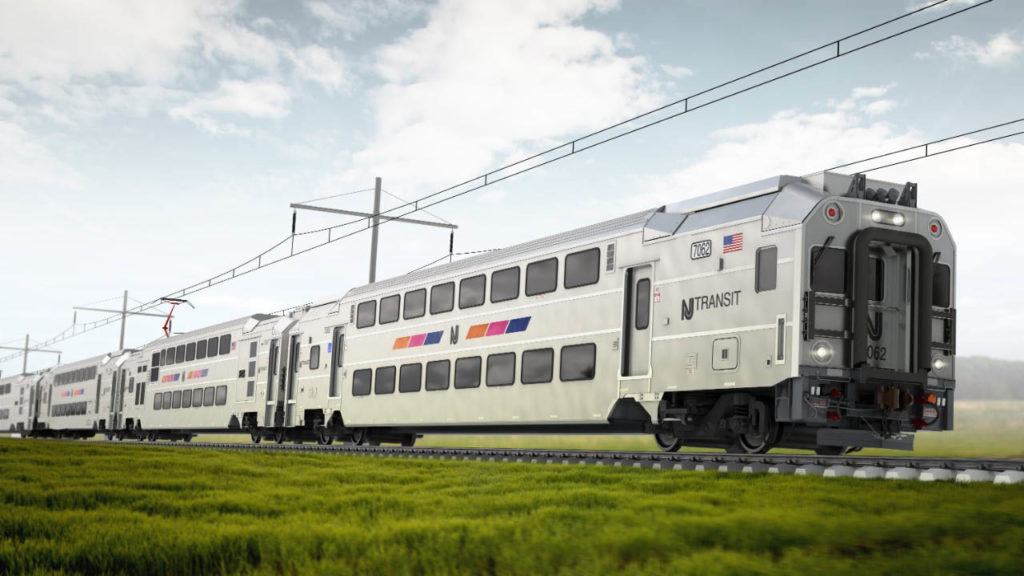
NJT on Aug. 22 reported being named to Forbes’ America’s Best-in-State Employers list for the third consecutive year. In 2023, the transit agency ranked No. 5 among the 89 New Jersey organizations that were included, up from last year’s ranking at No. 7. The survey, according to Forbes, measures leading companies from around the world to identify those “best-liked” by employees.
NJT said its 2023 ranking marks the fourth time in the past six years that it has been recognized as one of New Jersey’s best places to work.
Forbes’ 5th annual America’s Best-in-State Employers list was created by partnering with market research firm Statista to anonymously survey full- and part-time workers at companies across the United States with more than 500 employees. Participants were asked to evaluate their employer based on several factors including working conditions, diversity, salary, development potential and company image. The rankings were also based on the surveyed employees’ willingness to recommend their own employers to friends and family. Additionally, survey participants were asked to evaluate other employers—in their respective industry—and provide feedback on how these other organizations stood out positively or negatively. Ranked among the top employers were 1,392 employer brands. If applicable, brands were able to win in more than one state.
NJT ranked No. 1 in New Jersey in the “Transportation and Logistics” category.
“NJ Transit’s continued recognition on Forbes’ Best-in-State Employers list, added to our recent honor as 2023’s Outstanding Public Transportation System by the American Public Transportation Association, clearly demonstrates how we have transformed this organization from the inside out,” NJT President and CEO Kevin S. Corbett said. “This recognition is a testament to the hard work and commitment of the nearly 12,000 employees who are not only improving the customer experience, but also making NJ Transit one of the best places to work.”
In a related development, Watco was named a top transportation and logistics company on the Forbes 2021 list of America’s best employers.
WMATA
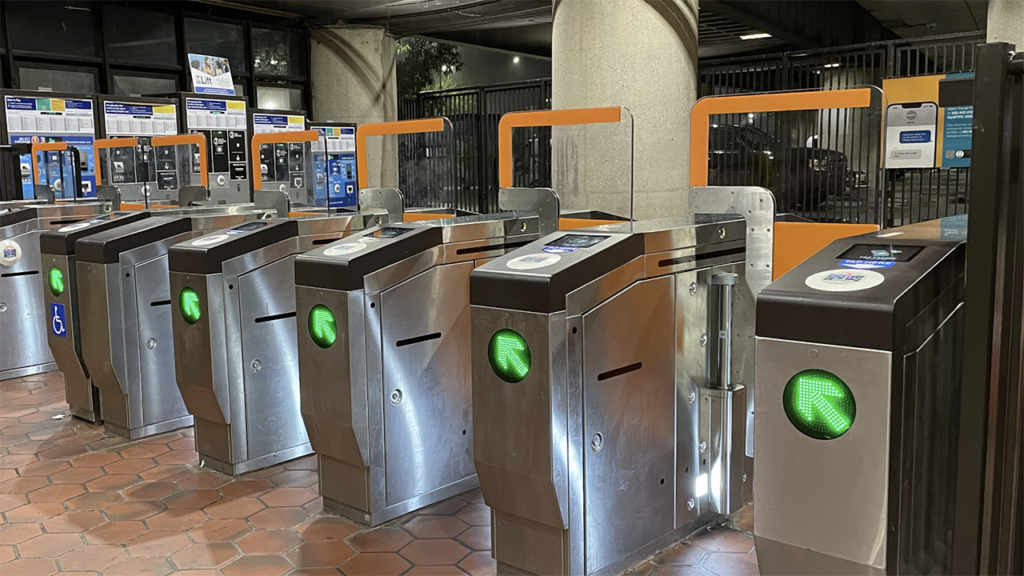
WMATA on Aug. 22 reported releasing preliminary data that shows its new, higher faregates are reducing fare evasion by more than 70% at the first stations to be equipped with them, including Fort Totten, Pentagon City, Bethesda, Vienna, Mt. Vernon Square, and Addison Road. The transit authority said it is now publishing both paid and unpaid ridership data on its online ridership portal “to provide transparency on the effectiveness of fare evasion reduction strategies and a more complete picture of total ridership to the public.”
New faregate installation at Congress Heights was completed Aug. 22, and installation at Federal Center SW, Wheaton, and Court House is slated for completion by early September, followed by the rest of the rapid transit system, according to WMATA, which said it will continue to monitor new faregate performance as the rollout is completed.
WMATA started installations at the Fort Totten Station earlier this summer.
The new design includes an L-shape door panel that extends over the faregate to minimize gaps between the openings, the transit authority said. The increase in barrier height from the original 28-to-48-inch prototype to 55 inches also makes it more difficult to jump over faregates.
The swing doors are made of a polycarbonate, which WMATA said is 200 times stronger than glass, lighter weight and more durable. The final design includes more “robust hinges and a more powerful motor to strengthen the door,” WMATA added. As stations are retrofitted with the new barriers, the transit authority is also raising the height of fencing and emergency gates.
“After testing multiple prototypes and getting feedback from customers, the new faregate design is having its intended effect—reducing fare evasion,” WMATA General Manager and CEO Randy Clarke said. “It is critical for Metro [WMATA] to collect as much fare revenue as possible and keep the system safe so we have a transit system worthy of this great region.”



